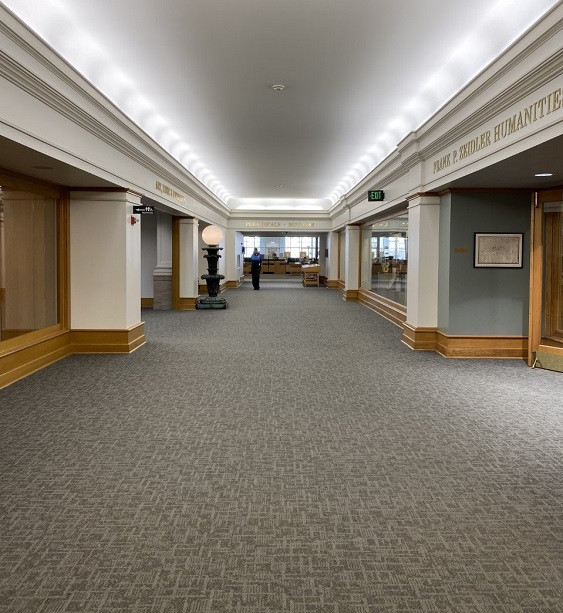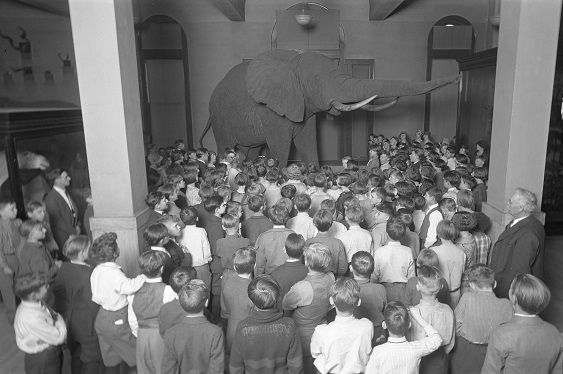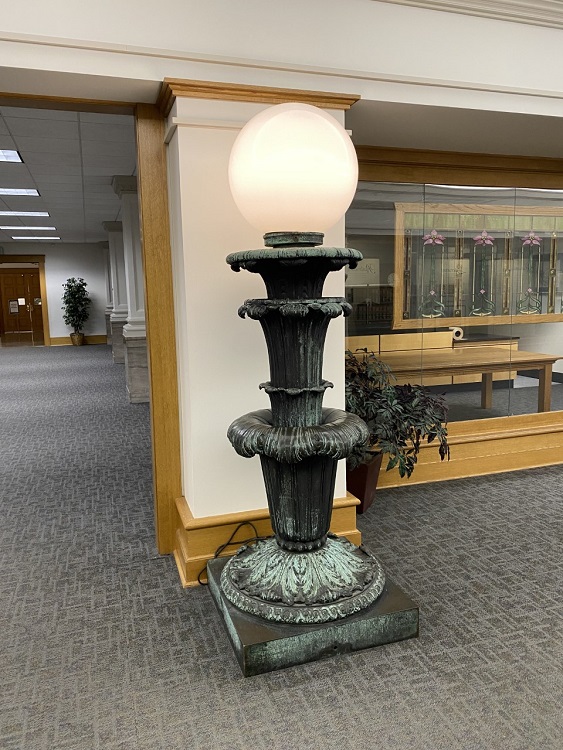
2nd Floor Main Street
2nd Floor Main Street

View looking north down 2nd floor main street
Zeidler Room
This 2nd floor hallway is often referred to as the 2nd floor main street, and it is the main access to all the 2nd floor public spaces/departments. On the east side of the hall, you will notice the entrance to the Frank P Zeidler Humanities Room. This space, its name now shortened to the Zeidler Room, is the access point for Humanities subjects including local history and genealogy. It is also where other reference materials and specialized collections can be requested from storage areas. This includes reference books from the Art Music and Recreation Room (AMR) and basement storage levels, as well as materials from our Archives and Special Collections. Those collections include Milwaukee Historic Photo Collection, Great Lakes Marine Collection, City of Milwaukee Archives, Milwaukee Road Archives, Wisconsin Architectural Archives, and our Local History Manuscript Collection.

Timba the taxidermized elephant, undated
This space was originally a Museum exhibit space for Mammals and held a large taxidermized elephant. That elephant was the last item to be moved out as the Museum relocated across the street. In the mid-1990s the space was remodeled and reopened in June 1997 as the Frank P. Zeidler Humanities Room. It was named after Frank P Zeidler, who was Milwaukee’s mayor from 1948-1960.
Library History Display
Directly across from the Zeidler Room entrance is a library history display. It was created in 2001 using MPL memorabilia, furniture and equipment actually used by onsite staff over the decades. Some notable pieces include:
- The red dater pencil in the display was designed by an MPL employee and sold nationally through the Library Bureau company.
- The rolled-top desk was used by City Librarians, most recently by Richard E. Krug from 1941 to 1974.
- Card catalogs were familiar to most library users in the 19th and 20th centuries. Each book in the library’s collection was described on a 3 by 5-inch card. The data included the name of the author; title of the book; place, date, and name of publisher, the subject of the book and the “call number”. MPL used catalogs like this until August 1, 1995 when we switched to an online Library catalog called CountyCat.
- The open ledger on the desk is an early accession list.This is a list of the books added to the collection in order of receipt. Now all of this type of information is kept online with software programs and computers.
- The rubber stamp tree on the desk was used to store rubber stamps used to save time in processing books. Some of the stamps include "Do Not Discard" and "8 track tapes."
- The book on the desk is the Decimal Classification and Relative Index, written by Melvil Dewey, copyrighted in 1876. The Library Bureau published this edition in 1899. The librarians used this tool in for cataloging materials. MPL, as most other public libraries, still uses the Dewey Decimal system for cataloging.
- Telephones were introduced to the library over one hundred years ago. MPL introduced its Ready Reference Service in 1956.

Electrolier originally located outside South Library branch
Directly north from the Library History Display, across the hallway opening is an electrolier (free-standing lamp) that used to sit in front of the old South Library branch. Originally two of these were installed at that branch in 1910 to commemorate the 58th birthday of Judge James M. Pereles.
Next stop: Rare Books & Art Gallery
Previous stop: Gray Rotunda